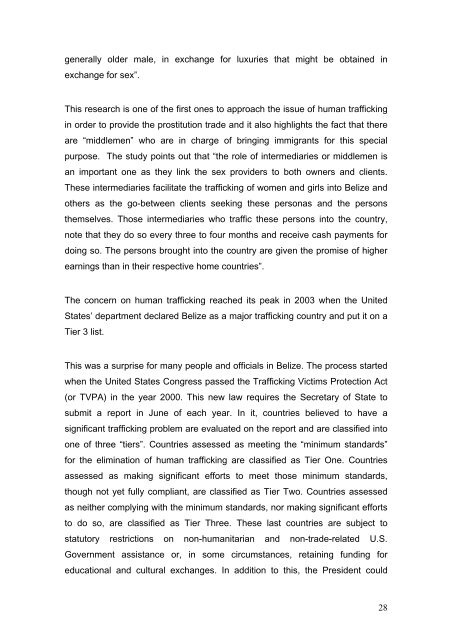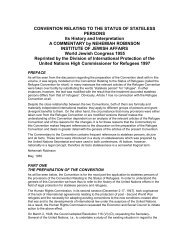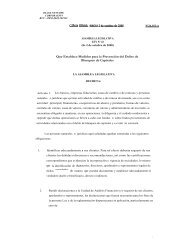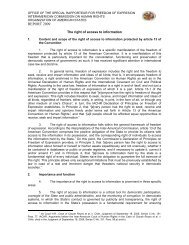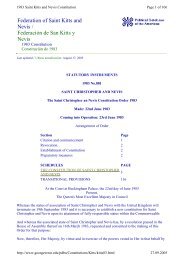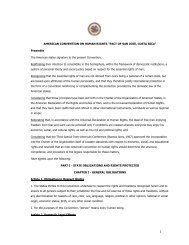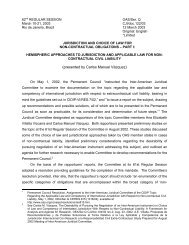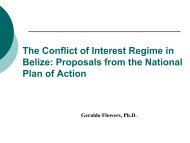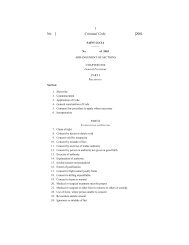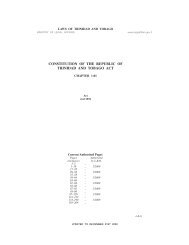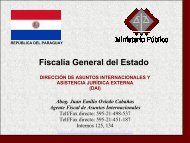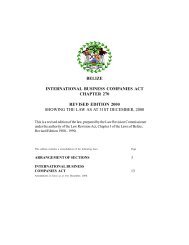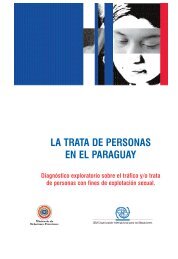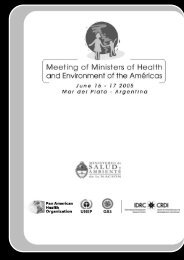TRAFFICKING OF PERSONS IN BELIZE - OAS
TRAFFICKING OF PERSONS IN BELIZE - OAS
TRAFFICKING OF PERSONS IN BELIZE - OAS
Create successful ePaper yourself
Turn your PDF publications into a flip-book with our unique Google optimized e-Paper software.
generally older male, in exchange for luxuries that might be obtained in<br />
exchange for sex”.<br />
This research is one of the first ones to approach the issue of human trafficking<br />
in order to provide the prostitution trade and it also highlights the fact that there<br />
are “middlemen” who are in charge of bringing immigrants for this special<br />
purpose. The study points out that “the role of intermediaries or middlemen is<br />
an important one as they link the sex providers to both owners and clients.<br />
These intermediaries facilitate the trafficking of women and girls into Belize and<br />
others as the go-between clients seeking these personas and the persons<br />
themselves. Those intermediaries who traffic these persons into the country,<br />
note that they do so every three to four months and receive cash payments for<br />
doing so. The persons brought into the country are given the promise of higher<br />
earnings than in their respective home countries”.<br />
The concern on human trafficking reached its peak in 2003 when the United<br />
States’ department declared Belize as a major trafficking country and put it on a<br />
Tier 3 list.<br />
This was a surprise for many people and officials in Belize. The process started<br />
when the United States Congress passed the Trafficking Victims Protection Act<br />
(or TVPA) in the year 2000. This new law requires the Secretary of State to<br />
submit a report in June of each year. In it, countries believed to have a<br />
significant trafficking problem are evaluated on the report and are classified into<br />
one of three “tiers”. Countries assessed as meeting the “minimum standards”<br />
for the elimination of human trafficking are classified as Tier One. Countries<br />
assessed as making significant efforts to meet those minimum standards,<br />
though not yet fully compliant, are classified as Tier Two. Countries assessed<br />
as neither complying with the minimum standards, nor making significant efforts<br />
to do so, are classified as Tier Three. These last countries are subject to<br />
statutory restrictions on non-humanitarian and non-trade-related U.S.<br />
Government assistance or, in some circumstances, retaining funding for<br />
educational and cultural exchanges. In addition to this, the President could<br />
28


